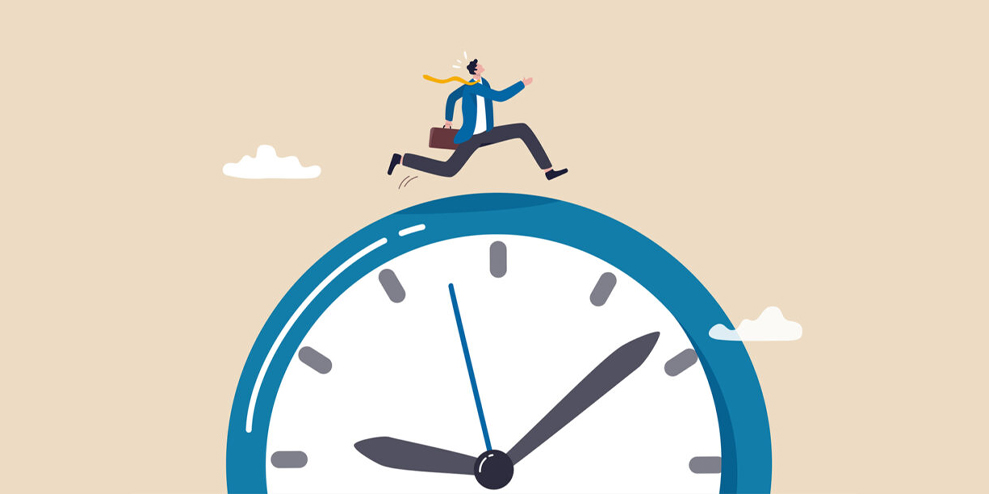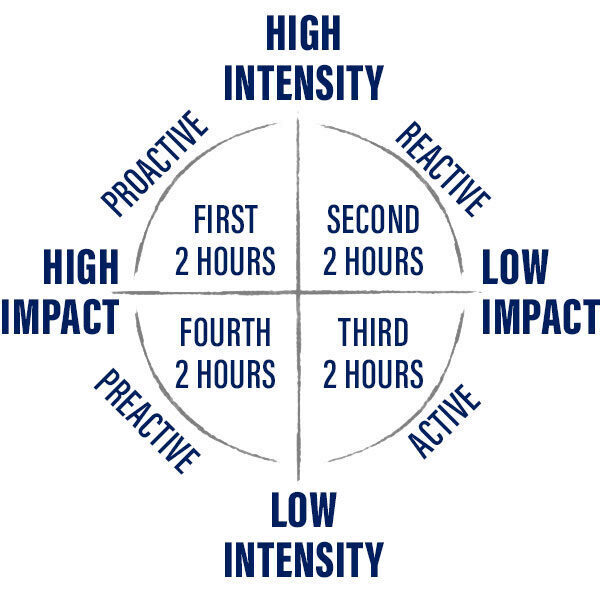Nano Tools for Leaders® — a collaboration between Wharton Executive Education and Wharton’s Center for Leadership and Change Management — are fast, effective tools that you can learn and start using in less than 15 minutes, with the potential to significantly impact your success.
Nano Tools for Leaders® are fast, effective leadership tools that you can learn and start using in less than 15 minutes — with the potential to significantly impact your success as a leader and the engagement and productivity of the people you lead.
The Goal
Invest your energy strategically to improve productivity and results.
Nano Tool
Many of our productivity problems come about because we are operating on autopilot. We don’t think about what, when, or even why we are doing things; we just do them in the order in which the tasks come to us, or how they’re written on our to-do list. Add to that a near-constant inflow of information and problems to solve, and it can feel like time evaporates without you ever getting to the tasks that matter most.
Just like the default settings of a computer program, these autopilot settings have developed over years of learning, repetition, and reward, such as: in the morning, I check my email; in the afternoon, I hold our department meeting. Because they feel like they are hardwired, these settings can be difficult to change. But there’s a very good reason to do it: Neuroscience research shows that there are optimal times for doing certain types of work. Our “internal clock,” better known as a circadian rhythm, shapes our energy levels throughout the day, with predictable highs and lows. Designing your day by scheduling tasks to coordinate with those natural energy levels takes understanding, discipline, and practice, but the reward — greater productivity in less time and with less struggle — is well worth the effort.
By determining when you are most resourceful, and therefore when you should complete your most demanding tasks, you can do your most important work at the right time of day so it gets the resources it deserves. You can take yourself off autopilot and take back control of every hour of your day, doing the right work at the right time (even if you consider yourself a night owl).
Action Steps
When it comes to scheduling tasks, we need to think about how much energy, or intensity, will be required so that we choose times when our level of alertness is at its highest.
1. Begin by creating a list of the tasks you normally accomplish during the course of a week, and plotting them on the chart below to help you categorize them as follows:
- High intensity/high impact. Tasks that directly and positively affect your work and results and require a lot of attention, energy, and focus. This is your most important work. If you ever find yourself saying, “I need to book a meeting room or work from home so I can concentrate on X,” it’s a task that falls into this category.
- High intensity/low impact. Tasks that require you to be on your game and may be in the service of others. Ever had someone ask if they could pick your brain on something, or bounce an idea off you? These are examples of this category.
- Low intensity/low impact. Tasks that you can do on autopilot because they are easy, repetitive, and routine, and the stakes are low.
- Low intensity/high impact. Tasks that don’t require a lot of heavy lifting brain-wise, but will have a positive impact on your world, such as planning, maintenance, and preparation for a successful next day.
2. Now that you have identified the tasks that require the most energy or intensity, and the things that get you a great return on your investment, you can decide when you need to be “on” and when you can be available so you can maximize productivity. Since most of us work an average of eight hours a day (or at least aspire to!), and our energy and available resources change throughout the day, carve out four two-hour sessions as follows, and match your task list to the session that fits best:
- First two hours: Proactive
- Second two hours: Reactive
- Third two hours: Active
- Fourth two hours: Preactive
How Leaders Use It
Ivan was in the privileged position of having his own office. This meant he could schedule open- and closed-door time quite easily. But he found that even when his door was open, people weren’t coming in. He started to feel isolated from his team, and his scheduled one-on-one meetings felt stiff. He believed there were a few reasons for this: his highly hierarchical organization meant that people could be nervous about “bothering” senior people, and his office, with its massive desk that he sat behind, only reinforced the hierarchy. He decided to keep the door closed during the first two hours of his day so he could accomplish the high intensity/high impact tasks on his list. But to maximize productivity and results in the second two hours, he physically moved to a desk out with the team. At first, they were taken aback and continued to avoid speaking with him. But gradually people started opening up, making good use of his time “in the pit,” as his team referred to it.
Jada always checked her email first thing in the morning. Her rationale was that overnight, overseas colleagues were messaging her with demands that she needed to respond to immediately. But then she realized that most of her responses wouldn’t arrive until 4 p.m. local time at best, and that she should reorder her tasks and priorities. Now she still turns to emails first, but she scans them, identifying those that need focused attention. She drags them into a separate folder, and unless something requires her immediate response, she turns her attention to the tasks she has scheduled for her first two hours. She then reviews emails, deferring some to the next morning and dealing with the quick and mundane ones. She responds to overseas requests later in the afternoon, when the recipients are online, which means a quick phone call or instant message sometimes suffices. By redesigning her day in this way, Jada has reduced the time she spends on email and has reclaimed those first two hours when productivity is naturally higher.
Contributor to This Nano Tool
Donna McGeorge, global authority on productivity and best-selling author of the It’s About Time Productivity Series, including The 25-Minute Meeting, The 1-Day Refund, and The First 2 Hours, on which this Nano Tool is based.
—
This article first appeared on knowledge.wharton.upenn.edu
Seeking to build and grow your brand using the force of consumer insight, strategic foresight, creative disruption and technology prowess? Talk to us at +971 50 6254340 or engage@groupisd.com or visit www.groupisd.com/story


